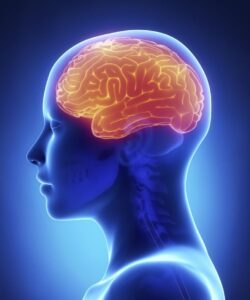The Bruce Willis Story Brings Awareness to Frontotemporal Dementia
This past year, America was shocked when it learned that popular actor Bruce Willis had been diagnosed with aphasia. This came out when the family released a statement on social media that Willis would be stepping back from acting due to the condition.
More recently, we’ve learned about an even more specific diagnosis for Willis’s condition—frontotemporal dementia. Again, Americans were shocked.

“Dementia?” they wondered. “Doesn’t that just affect people in their 80s and 90s?”
Not really. There are many types of dementia, and some—like frontotemporal dementia—often start earlier.
In fact, it turns out that Willis, who is 67, has been struggling with his memory for a few years—so much so that writers and directors of his movies have been cutting back on his lines and the number of days he’s asked to work.
So, what IS frontotemporal dementia, what are the symptoms, and most importantly, if someone you know is diagnosed with it, what can be done to help them?
Let’s take those questions one at a time…
What is Frontotemporal Dementia?
According to the Mayo Clinic, “Frontotemporal dementia is an umbrella term for a group of brain disorders that primarily affect the frontal and temporal lobes of the brain. These areas of the brain are generally associated with personality, behavior and language.”
In frontotemporal dementia, portions of these lobes shrink, or atrophy, leading to a variety of symptoms, depending on which parts of the brain are most affected.
As mentioned above, frontotemporal dementia tends to occur at an earlier age than most other types of dementia or Alzheimer’s disease. Frontotemporal dementia often begins between the ages of 40 and 65 but also can occur later in life. Frontotemporal dementia makes up about 10% to 20% of dementia cases.
Frontotemporal dementia is a progressive disease. The average survival time after diagnosis is 7.5 years, though it can be as short as two years or as long as 10+ years.
Sadly, there are currently no treatments for the disease.
Frontotemporal Dementia Symptoms
When you talk about the symptoms of frontotemporal dementia, you need to first identify which type of FTD you’re talking about. There are two main variants: (1) the behavioral variant and (2) the language variant.
Behavioral variant FTD is more common and is primarily characterized by changes in personality and behavior. This is because neural loss is occurring more in the frontal lobe area, which is responsible for impulse control, judgement, foresight, and empathy.
Common symptoms of behavioral variant FTD are:
- Problems with planning and sequencing
- Difficulty in prioritizing tasks or activities
- Acting impulsively
- Doing or saying inappropriate things
- Becoming disinterested in family activities
Language variant FTD is often called primary progressive aphasia (PPA). It affects the language centers of the brain, located in the temporal region.
There are two sub-types of PPA: (1) non-fluent variant PPA and (2) semantic-variant PPA. People with the non-fluent variant tend to have speech that is halting, labored, and ungrammatical. People who suffer from the semantic variant lose the ability to understand or formulate words in a sentence.
Behavior-variant FTD and semantic-variant PPA are more common in men, while non-fluent variant PPA occurs more often in women.
Common symptoms of language variant FTD are:
- Difficulty speaking or finding the correct word
- Difficulty naming objects
- Problems with reading and writing (later stages)
AAC Apps for Aphasia
As mentioned above, there are currently no treatments for frontotemporal dementia and no way to slow its progression.
This makes caring for someone with FTD challenging. The best-case scenario is to use a multidisciplinary approach that includes social support services, physical therapy, occupational therapy, speech therapy, cognitive behavioral therapy, and caregivers’ education. It really does take a team of caring individuals to give a person with FTD the best quality of life.
One tool that can be a major help to the person with FTD that is often overlooked is augmentative and alternative communication (AAC) apps that provide photos and text to speech features.
For example, for people who struggle coming up with the right word to use in their speech, an AAC app provides lexical support and also reduces the negative emotions and self-perceptions the person might experience when they get frustrated, intimidated, or discouraged when struggling to say what they wish to say. The app can help these people communicate with fewer cues, making conversations less stressful.
For those who struggle to name things, a photo-based AAC app helps them to abstract meaning from real-life, context based photos. Pairing words with photos allows the person to get the meaning of the word from the photo.
And for those who are struggling with hesitant speech or who often make mistakes in sentence construction, an app with pre-recorded speech output can allow them to communicate effectively with those around them.
APP2Speak—A Versatile Speech Impairment App for a Variety of Conditions
If you know someone who is currently struggling with FTD and who is not using an AAC app as part of their approach to dealing with the condition, you might want to introduce them to APP2Speak.
Our app provides both photo-based support and text to speech functions and can be a great support and comfort for someone living with this very difficult disease.
Check out the How It Works page to learn more about the features APP2Speak provides. Or reach out to us by using the form on the Contact page. We’d love to show you how we can help!
